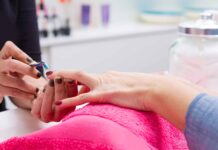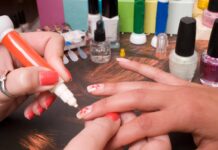Salons are meant to be a place of relaxation, rejuvenation, and self-care. Whether you’re getting a fresh new haircut, a luxurious pedicure, or a relaxing massage, salons provide a space for clients to unwind and pamper themselves. However, with the close proximity of staff and clients in a salon setting, there is always a risk of diseases being spread. Understanding how diseases might be transmitted in a salon is crucial for both salon professionals and clients to take appropriate precautions and ensure a safe environment for everyone.
One of the most common ways diseases can be spread in a salon is through direct contact with infected individuals. This can happen if a salon staff member or client who is sick comes into contact with surfaces such as doorknobs, countertops, tools, or shared equipment. In a fast-paced environment like a salon, it can be easy for germs to be transferred from one person to another without either party realizing it.
Additionally, diseases can also be spread through indirect contact with contaminated surfaces. For example, if a client with a cold touches a surface in the salon, such as the armrests of a chair or the buttons on a hair dryer, the next person who touches that surface could potentially pick up the germs and become infected. This is why proper sanitation and disinfection practices are so important in a salon setting.
To prevent the spread of diseases in a salon, both salon professionals and clients can take simple but effective steps. Salon staff should regularly disinfect all tools and equipment used between clients, as well as high-touch surfaces such as doorknobs, countertops, and front desk areas. It’s also important for staff to wash their hands frequently and encourage clients to do the same before and after their appointment.
Clients can also do their part by being mindful of their own health and hygiene. If you are feeling unwell or showing symptoms of illness, it’s best to reschedule your salon appointment to prevent spreading germs to others. Additionally, clients should practice good hand hygiene by washing their hands thoroughly with soap and water before and after their appointment.
In terms of best practices, some salons have implemented touchless payment options, contactless check-in procedures, and spaced out appointment times to reduce the number of people in the salon at any given time. These measures can help minimize the risk of disease transmission and provide a safer environment for both clients and staff.
Overall, understanding how diseases might be spread in a salon is essential for creating a safe and healthy environment for everyone. By following proper sanitation protocols, practicing good hygiene, and being mindful of your own health, you can help prevent the spread of diseases in a salon setting. Remember, taking care of your health and well-being is just as important as looking and feeling your best. Stay safe and stay healthy!












